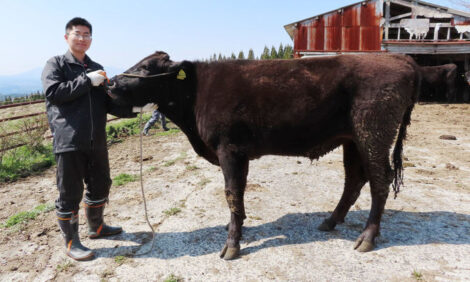



Rabobank's Justin Sherrard describes US price differential between beef and chicken
Sherrard also spoke about the global poultry industryJustin Sherrard, the Global Sector Strategist for Animal Protein with Rabobank, recently spoke to The Poultry Site’s Sarah Mikesell in Orlando, Florida, USA at the National Cattlemen’s Beef Association (NCBA) conference about the global poultry industry.
Editor’s note: I missed the chance to speak to the Rabobank team at IPPE this year, but I jumped at the opportunity to talk chicken with Justin Sherrard a few days later at the NCBA’s CattleCon event put on by the US cattle industry. As you might imagine, the comparison between beef and poultry retail prices came up several times in presentations and conversations.
Tell us about the global poultry industry for 2024.
We are in a pretty good position in the global poultry industry. Markets and industries in most parts of the world are performing well; people are making a margin. The outlook is probably a mild positive as well. Things are going to get slightly better because we have seen feeding costs come down. Grain and oil seed prices have dropped faster than we thought this year. There may be a little bit further for them to go as well, but it takes a bit of time for that to flow into the system – that lower price. We will see some extra margin coming through there.
We still have some inflationary pressure around in most parts of the world. In the US, we have just seen the Federal Reserve decide to push back on an interest rate cut that some people expected as soon as March because inflation has been persistent. They are not ready to lower rates because they fear that would create even more inflation. So, there's still inflation, and high inflation does lead to a little bit of what we call trading down activity from consumers that always benefits the poultry industry.
So, these are a couple of reasons to be a little bit positive about where things may stay and may go as we get into the year, and that is the case in most markets around the world.
However, avian influenza is an ongoing risk. It does not matter whether you are here in the US, or you are in any part of the world, avian influenza is still an issue. It affects trade; it affects production, and it is unpredictable. We cannot afford to take our eyes off that. What worries me more than most other things is the risk of an outbreak of avian influenza in a commercial flock in Brazil. Brazil is the world's biggest chicken exporter. Brazil is the world's biggest exporter of most things in the agri world and is the world's biggest exporter of chicken meat.
An outbreak in a commercial flock will lead to some importers stopping that flow from Brazil and that then affects all trade - not just for poultry - because they are also a big beef exporter. And they are a big pork exporter as well, so it affects all those trade flows. If you have more chicken in that country, you are going to try to export more pork and more beef so other exporters feel that.
In the meantime, other chicken exporters like the US, the world's second biggest chicken exporter, are going to see those prices rise. So, when I said chicken is benefiting from lower costs and trading down activity, that all gets a little bit upset if you suddenly see that jump up. Avian influenza can change things in an unpredictable way. In itself, it’s unpredictable. We do not know whether there will be an outbreak in a commercial flock in Brazil any more than we can say there is going to be outbreaks here in the US that will impact the distribution of breeding stock here which is another issue.
Let’s shift gears, bring it back to the US and talk about the US poultry market. How do chicken and beef prices compare?
US consumers are being asked to spend a lot of money on beef and they are. And they will probably be asked to spend more. I mean, if you think about where the cattle cycle is, where we see declining numbers and when it is sort of waiting for a rebuild to happen. Producers start rebuilding when there is a price signal that says, ‘okay, now there is enough margin to hold on to those heifers and to put them into the breeding herd.’ It is the cattle cycle; it takes time. But clearly, what we can say is that the price incentive is not sufficiently high now to trigger that rebuild. Consumers here in the US need to pay a little bit more for beef before we start to see that rebuild happen.
I’m laboring on that point a little bit because the price differential between where chicken prices are, and pork prices for that matter, is an advantage for the chicken industry at the moment. It is a lot of money to pay for beef. Chicken is not cheap either, but relatively speaking - and that is what matters – the relative difference because that is what a consumer looks at in the meat case. Chicken breast skinless fillets and ground beef - there is a relationship between them in price which they are expecting. While chicken is relatively less expensive than beef, they are going to buy more chicken. There is a connection between them which I think is important for people to understand.
There is an opportunity right now in the chicken industry, and for pork as well, to really capitalize on this moment with high priced beef to push on the consumer trends that we know are there, and we know are relevant. They want convenience, and they will continue to spend money on convenience. This is an opportunity not to sit back and say, ‘okay, we have a cost advantage here’. Rather, let us take that advantage and use it and lock it in by going even further and faster on convenience. The chicken industry is quite good at that already but let us go even further than that to really help to keep ahead of these consumer trends.



